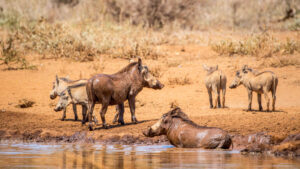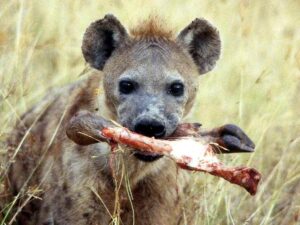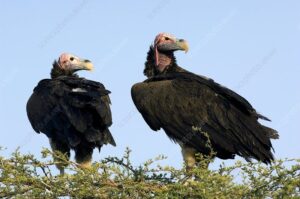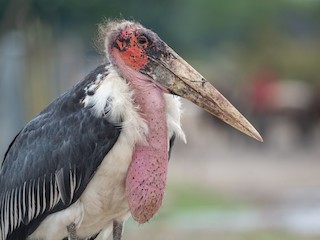Aside from the big five, another group of animals quietly becoming a fan favorite among wildlife lovers is the ugly five animals.
Showcasing a different side of Kenya’s wild beauty, the ugly five animals Kenya may not win beauty contests, but have unique appearances, making them fascinating animals to see in the wild.
Naicef is the best tour company to go on an ugly five safari Kenya and experience the charm of what might not be the traditional beauty standards of animals in the wild.
Contact Naicef at my@naicef.com, call +254799922277, or get a personalized tour package here;
Book Any Ugly Five Tour Here
This guide gives you the ugly five animals package and ugly five animal tours in Kenya while learning about the vital roles played by the ugly five animals in the ecosystem.
Local communities call the ugly five animals “nature’s cleaners” as they have a knack for clearing up leftovers, hence keeping the land clean.
Unlike traditional safaris, the ugly five animals package emphasizes the beauty of imperfection and nature’s balance.
Who Are The Ugly Five Animals?
The Ugly Five animals Kenya, nature’s disasters include:
1. Warthog
Known for its rough looks and large tusks, the warthog is often seen grazing on short grass and is both comical and impressive.
Might look clumsy as depicted by Pumba from The Lion King, but they are surprisingly fast and run with their tails up like a flag.
Warthogs do not actually dig their own burrows but instead occupy abandoned ones, and they love to wallow in mud, a tactic that helps them remove parasites from their bodies.
It can often be found in savannas, open grasslands, and lightly wooded areas.
This group of ugly five animals is related to domestic pigs, but they are completely wild and can go for months without water for survival.
On ugly five animals tours in Kenya, the warthog can be spotted in the following areas;

2. Hyena
Powerful hunters and are capable of taking down large prey like wildebeests, and less often steal their food from lions, as most people might perceive it to be.
Carry out their hunts in coordinated groups and have a bite that is strong enough to crush bones, which they digest entirely.
Female hyenas are stronger and larger, dominating over the males and even eating the first kills, which is rarely depicted among the animal kingdom.
Often misunderstood, hyenas are clever hunters and excellent scavengers, keeping the ecosystem clean. Their “laugh” echoes across the savannah at night and is a communication tool.
Hyenas are very common and widely distributed across the country.
An ugly five animals package that is centered around the hyena will include places like;
- Masai Mara National Reserve
- Lewa Conservancy
- Ol Pejeta Conservancy
- Sosian Conservancy
- Nairobi National Park
- Amboseli National Park
- Tsavo East National Park
- Samburu National Reserve
- Shaba National Reserve

3. Marabou Stork
Tall and bald-headed, these birds are not your typical graceful type that people often admire. Have ragged feathers, especially around the back and chest, giving them a shabby, unkempt look.
They may look odd with a massive, dagger-like bill and a big pinkish throat pouch that hangs loosely, but they are essential for keeping the plains clean.
They eat carcasses, waste, and scraps, helping prevent disease spread and play an essential role in the balance of nature.
The largest flying birds in Africa a dark bark and cloak-like wings, combined with a bald head, giving them a grim reaper silhouette, earning them the nickname of the “undertaker.”
Where to view it during an ugly five safari Kenya is;
- Nairobi National Park
- Lake Nakuru National Park
- Lake Naivasha
- Lake Elementaita
- Masai Mara National Reserve
- Amboseli National Park
- Tsavo East and Tsavo West National Park
- Buffalo Springs National Reserve
- Shaba National Reserve
- Samburu National Reserve

4. Lappet-Faced Vulture
The largest and most dominant vulture in Africa, dominating carcasses and often chasing away smaller vultures.
Interestingly, bald for hygiene to prevent bacteria buildup while eating carcasses and are considered ominous due to their scavenging habits.
Though widespread, the lappet-faced vulture is considered endangered as they are declining, so spotting one is a special moment during the ugly five safari Kenya.
Can actually live for up to 40 years in the wild and are monogamous creatures.
These large birds are often seen circling high above the savannah and are flight masters as they can soar for hours in the sky.
Their large hooked beaks can rip through tough hides that no other scavengers can manage, making them the cleanup crew.
Naicef gives an ultimate ugly five animals package that includes the lappet-faced vulture as you go on safari. The best places to view this vulture during the ugly five animal tours in Kenya are;
- Masai Mara National Reserve
- Tsavo East and Tsavo West National Parks
- Samburu National Reserve
- Buffalo Springs National Reserve
- Amboseli National Park

5. Wildebeest
With their sloping backs and long faces, wildebeests might seem unappealing to the eye, but they drive the famous Great Migration.
Celebrating wildlife beyond glamour, the Great Migration is one of the most remarkable wildlife events on earth.
With over 1.5million wildebeests alongside zebras and gazelles migrating across the Mara and Serengeti reserves.
They are highly social creatures as they can live in groups of thousands. Interestingly birth to up to 8000 calves a day during the migration to increase their chances of survival.
They are part of the ugly five animals due to their bristly mane and beard that give them a shaggy look, and their awkwardly shaped horns.
Naicef creates personalized tour packages for an ugly five safari Kenya where you can watch the Great migration. Check out these packages:
2 Days Masai Mara Balloon Safari Package
3 Days Masai Mara Dust and Drive Safari Package
3 Days Mara Amboseli Hot Air Balloon Safari

Why Book an Ugly Five Safari?
An ugly five safari Kenya gives the perfect opportunity to see animals that are often overlooked.
Unlike traditional safaris, ugly five animal tours in Kenya are for those who appreciate the beauty of imperfection.
Learn how these incredible, ugly five animals play a vital role in the ecosystem and capture dramatic shots during game drives.
Enjoy quieter, less crowded viewing experiences, especially in areas outside the main tourist circuits.
These areas offer opportunities to see the Ugly Five in their natural habitat, often alongside other iconic wildlife.
Naicef, a premium tech-travel company, creates tour packages tailored just for you and caters to your preference for ugly five animal tours in Kenya.
This 3-day ugly five animals package can be customized to include photography workshops, walking safaris, or cultural visits to Maasai villages.
Here is a summary of what your package can look like.
| Day | Activity | Expectation |
| 1 7 am-1 pm
| Head to Masai Mara National Reserve | You will start your tour from Nairobi to Masai Mara National Reserve and have lunch along the way according to your preference. |
| 1 pm-5 pm | Afternoon game drive | After getting to the resort, embark on an afternoon game drive and focus on spotting warthogs and marabou storks. |
| 5 pm-8 pm | Sunset photography and dinner | Take sunset photos and have dinner at the lodge, then overnight stay |
| 2 8 am-6 pm | Full Day Game Drive | Head out in the early morning for a full-day game drive; you might spot hyenas coming from night hunts, such as lappet-faced vultures around carcass sites. Visit a watering hole in the afternoon to observe wildebeest herds Enjoy a campfire in the evening as you have dinner and an overnight stay
|
| 3 6 am-9 am | Morning game drive | An early morning game drive is the perfect opportunity to try and spot any animal you might have missed and experience the true beauty of nature as the sun rises.
|
| 9 am-10 am
| Breakfast | Have breakfast and check out of the resort. |
| 10 am-4 pm
| Departure | Depart from Masai Mara National Reserve and head back to the blissful, bustling city of Nairobi. |
Practice sustainable tourism by joining Naicef and embark on amazing ugly five animal tours in Kenya.
By booking an Ugly Five safari Kenya, you are directly supporting conservation efforts that protect these crucial species.
Want a personalized ugly five safari Kenya?
Book Any Ugly Five Tour Here
Contact Naicef at my@naicef.com or call us at +254799922277 for an experience like no other.
Conclusion
In conclusion, the ugly five animals Kenya safari is proof that beauty lies in diversity.
Booking ugly five animal tours in Kenya is about seeing wildlife from a new perspective. These creatures prove that every species, no matter how “ugly,” has a story worth telling.
If you’re planning your next trip, consider adding an ugly five animals package to your itinerary. It’s a unique way to experience Kenya’s wild soul, away from the crowds and close to the heart of nature.
Beyond their looks, the ugly five animals play an irreplaceable role in Africa’s ecosystem.
Hyenas and vultures clean up carcasses, preventing the spread of disease. Warthogs help aerate the soil as they dig.
Storks reduce waste by feeding on carcasses, and wildebeest migrations fertilize the grasslands, feeding countless species.
So next time you plan a safari, go beyond the Big Five and meet the Ugly Five; their charm might just surprise you.
Frequently Asked Questions
1. What animals make up the ugly five?
The ugly five animals include the warthog, hyena, marabou stork, lappet-faced vulture, and the wildebeest.
2. Why are they called the ugly five?
The term ugly five is used to describe their less appealing physical charateristics to other members of the wild that are naturally sought after trophies.
3. Where can you see them?
The ugly five can be seen in most national parks and game reserves in Kenya including the Masai Mara National Reserve.
4. Why do the ugly five matter?
The ugly five animals matter because they help balance the ecosystem by cleaning up and preventing disease spread.
5. Are they really ugly?
Subjectively, they may not be conventionally cute but but each animal has unique qualities and that is the beauty of it.




